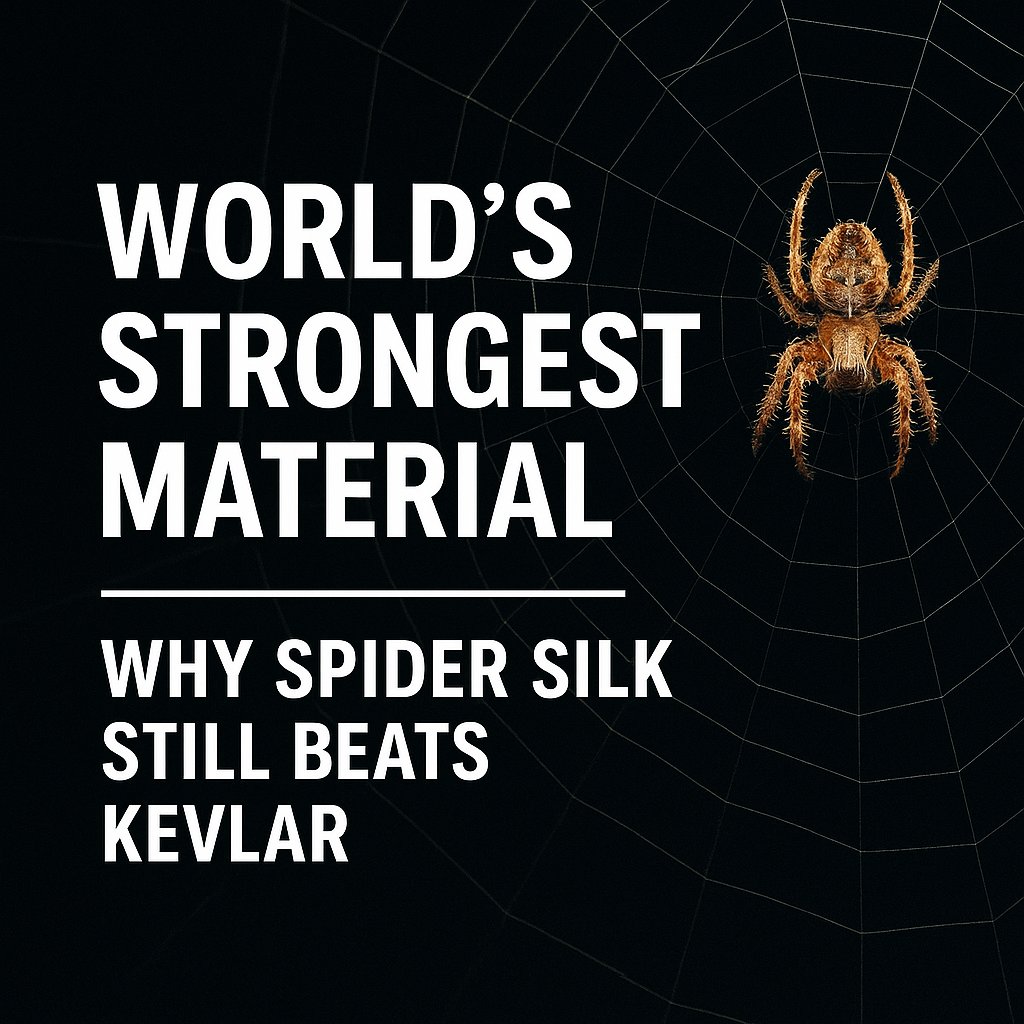World’s Strongest Material: Why Spider Silk Still Beats Kevlar

Spider silk is one of nature’s most extraordinary materials. It boasts a tensile strength of around 1.1 GPa — that’s on par with steel — while remaining far more flexible. In fact, it can stretch up to five times its length without snapping. That combination of strength and elasticity makes it ideal for shock absorption.
How Does It Beat Kevlar?
Kevlar is engineered for extreme strength, but it lacks the same stretch and flexibility. When exposed to sudden, dynamic forces (like a bird hitting a web), spider silk outperforms Kevlar in toughness — the ability to absorb energy before breaking. This dynamic toughness is what sets spider silk apart in the material science world.
How Are Scientists Using It?
While harvesting spider silk directly is inefficient (spiders are territorial and not easily farmed), researchers have found ways to produce synthetic versions. Using genetically modified bacteria, yeast, or even goats, scientists are replicating silk proteins to mass-produce spider silk alternatives.
Proposed Applications
- Bulletproof clothing and armour – For more flexible, lightweight protection.
- Medical sutures and ligaments – Because it’s biocompatible and extremely strong.
- Parachutes and ropes – Where stretch and strength are both critical.
- Aerospace components – Offering resilience without heavy materials.
- Smart textiles – Some synthetic silk can even be engineered to conduct electricity.
Still Early, But Promising
We’re not quite at the stage of mass-market spider silk products — but the technology is advancing quickly. From labs to prototypes, nature’s web is quietly reshaping what’s possible in materials engineering.